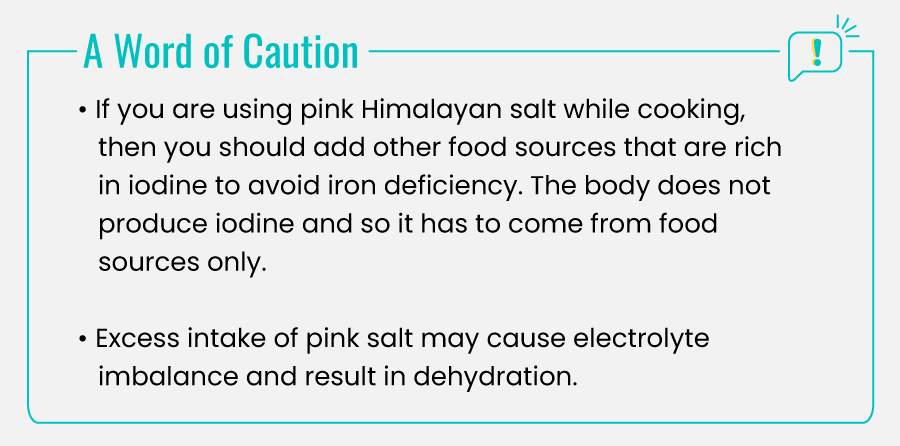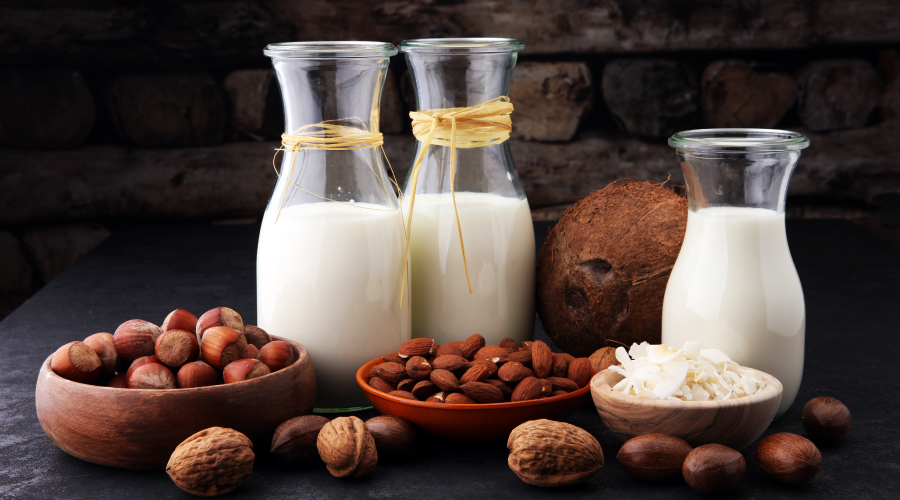

Pink Himalayan salt is quite different from table salt. The difference begins with the extraction method. Pink Himalayan salt is extracted from the Khewra Salt Mines situated close to the Himalayas in Pakistan. The pink Himalayan salt that is extracted from this mine is apparently formed by the evaporation of ancient bodies of water. It is manually extracted and minimally processed. But is Himalayan salt better than table salt?
Himalayan salt is unrefined, contains no additives, and is much more natural than table salt.
Salt can also be produced by evaporating salt water. Unlike pink Himalayan salt, table salt is refined as it goes through a lot of processing, which removes most of the minerals from the salt except sodium chloride. Additives like anticaking agents to remove moisture and iodine to prevent iodine deficiency are infused into the salt before it reaches the stores.
The claims that pink salt is loaded with minerals and has an array of health benefits have contributed to the perception that pink Himalayan salt is healthier than conventional salt.
In order to determine which kind of salt is healthier, the fundamental distinctions between pink Himalayan salt and table salt have to be examined.
Himalayan Salt vs Table Salt
Sodium chloride is the common mineral present in both pink Himalayan salt and table salt. Besides sodium chloride, pink Himalayan salt contains traces of other minerals, including calcium, potassium, strontium, and molybdenum. Strontium and molybdenum are rare minerals. The comparison between the minerals present in 1 gram of Himalayan salt and table salt is given below
| Mineral in mg | Table salt | Pink Himalayan Salt |
| Sodium | 381 | 361 |
| Calcium | 0.4 | 1.6 |
| Potassium | 0.9 | 2.8 |
| Magnesium | 0.0139 | 1.06 |
| Iron | 0.0101 | 0.0369 |
As indicated in the table, pink Himalayan salt contains a lesser amount of sodium than table salt but has a higher amount of other minerals like calcium, potassium, magnesium, and iron. But the other minerals are available in such low volume that to derive the recommended dietary value of these minerals, you will have to consume a considerably high volume of salt, i.e., approximately 1.5 kilograms which is impossible as it is an unrealistic amount.
The other minerals are present in such traces that it is unlikely they would provide any better health benefits than conventional salt.
How is Himalayan Salt Better Than Table Salt?
Though pink Himalayan salt has trace amounts of other minerals compared to table salt, where sodium is the only mineral in higher concentration, there are claims that pink Himalayan salt benefits score higher than that of table salt. However, studies do not specifically support these claims.
A few pink Himalayan salt benefits that are touted are:
- Relief from respiratory issues
- Maintaining the pH balance of your body
- Minimising signs of ageing
- Enhancing sleep quality
- Controlling blood sugar levels
- Improving libido
However, the non-dietary uses of pink Himalayan salt may to some extent be true.
Several studies have been conducted on salt caves being used as a specific treatment for various lung conditions. The findings have indicated that there might be some benefits but some more research is required to strongly prove the efficacy.
Some of these health benefits are those that are derived from sodium chloride and can be provided by any salt and need not be specific to pink salt.
Some studies have shown that a low intake of salt could be one of the reasons for sleep issues. It implies that sufficient consumption of salt is required to manage the circadian rhythm. Since the study was not conducted on pink Himalayan salt, it goes to show that sodium chloride plays a role in regulating the sleep cycle.
Additionally, the minerals in pink Himalayan salt are not present in sufficient concentrations to affect the pH balance of the body. Without the aid of pink Himalayan salt, your lungs and kidneys carefully control the pH of your body.
Furthermore, there are simply no scientific studies that show consuming pink Himalayan salt can improve any of these areas of your health, including blood sugar levels, ageing, and libido, which are all predominantly regulated by variables other than the salt in your diet.
Incorporating Pink Himalayan Salt into Cooking
Whether it is pink Himalayan salt or table salt, it is added to any recipe only to enhance the taste. The addition of salt is always as per taste. Some may like more salt in their dishes and some may like a lesser quantity. It depends on the individual’s palate.
If you are using coarsely ground salt for cooking, then you should use more of it to match the saltiness of the finely ground salt. The reason is that finely ground salt is packed closely and so will be more in volume when compared to coarsely ground salt. So, watch the measurement depending on the salt you are using. 1 teaspoon of finely ground salt will contain 2300 mg of sodium, while 1 teaspoon of coarsely ground salt will contain 2000 mg of sodium. The fact that pink salt contains less sodium than table salt also has to be considered when you are Himalayan salt for cooking.
Most adults consume over 2300 mg of sodium chloride, which is equivalent to 1 teaspoon of finely ground salt. If you are using Himalayan salt for cooking, you should read the label for the sodium content as it may vary with the brand.
Himalayan Salt for Non-Dietary Purposes
While pink Himalayan salt has a variety of culinary applications; it also has several well-liked non-culinary uses. Some bath salts that claim to heal tired muscles and improve skin conditions contain pink Himalayan salt.
Pink Himalayan salt is also frequently used to make salt lamps, which are said to purge the air of contaminants. These lamps are made of sizable blocks of salt heated by an internal light source. Additionally, people treat skin and respiratory issues by spending time in man-made salt caves composed of pink Himalayan salt.
However, the evidence for these three non-dietary uses of pink Himalayan salt is not very strong. More research is required to substantiate these assertions.

Conclusion
Is pink Himalayan salt better than table salt? It is difficult to say. It’s understandable why some individuals are perplexed about the best form of salt to use, given the erroneous health claims that have been made. However, no research has examined the health advantages of pink Himalayan salt to normal table salt. It’s unlikely that they would trace any differences even if they did.
If you are health conscious and want to stay away from additives in any form of food product, then pink Himalayan salt is a good all-natural option for you. But do not include it in your grocery list with anticipation of deriving profound health benefits that you have been constantly hearing about. You may get disappointed.
You should also be watchful about your iodine levels. Table salt is a good dietary source of iodine. If you are using pink salt, you will have to include foods like fish, dairy products, and seaweed into your diet to avoid iodine deficiency. This is because our body does not produce iodine and it has to be derived from diet alone.
Finally, if you are price-conscious and you do not mind the additives, then opting for table salt should be fine. Himalayan salt is much more expensive than table salt.




